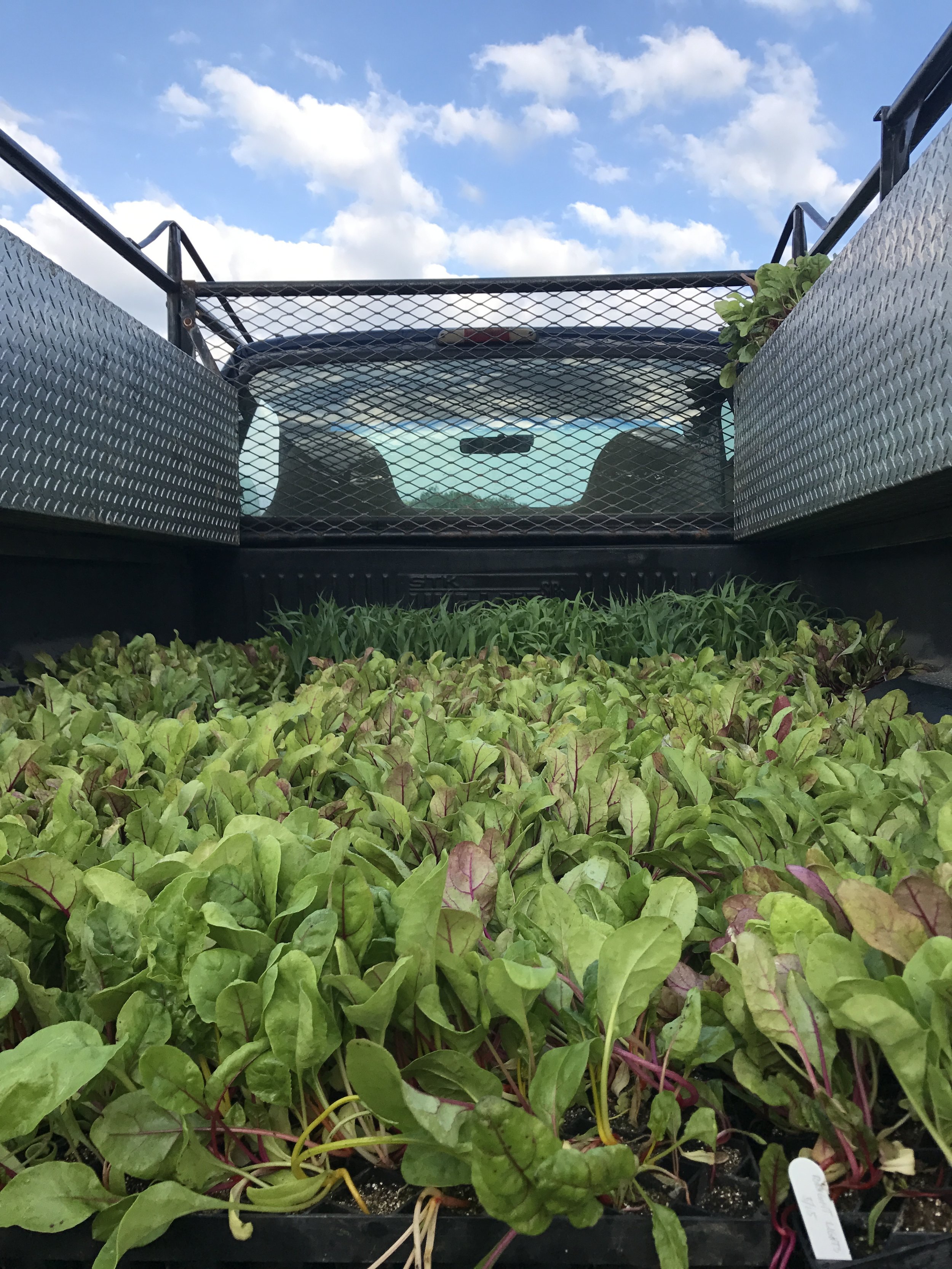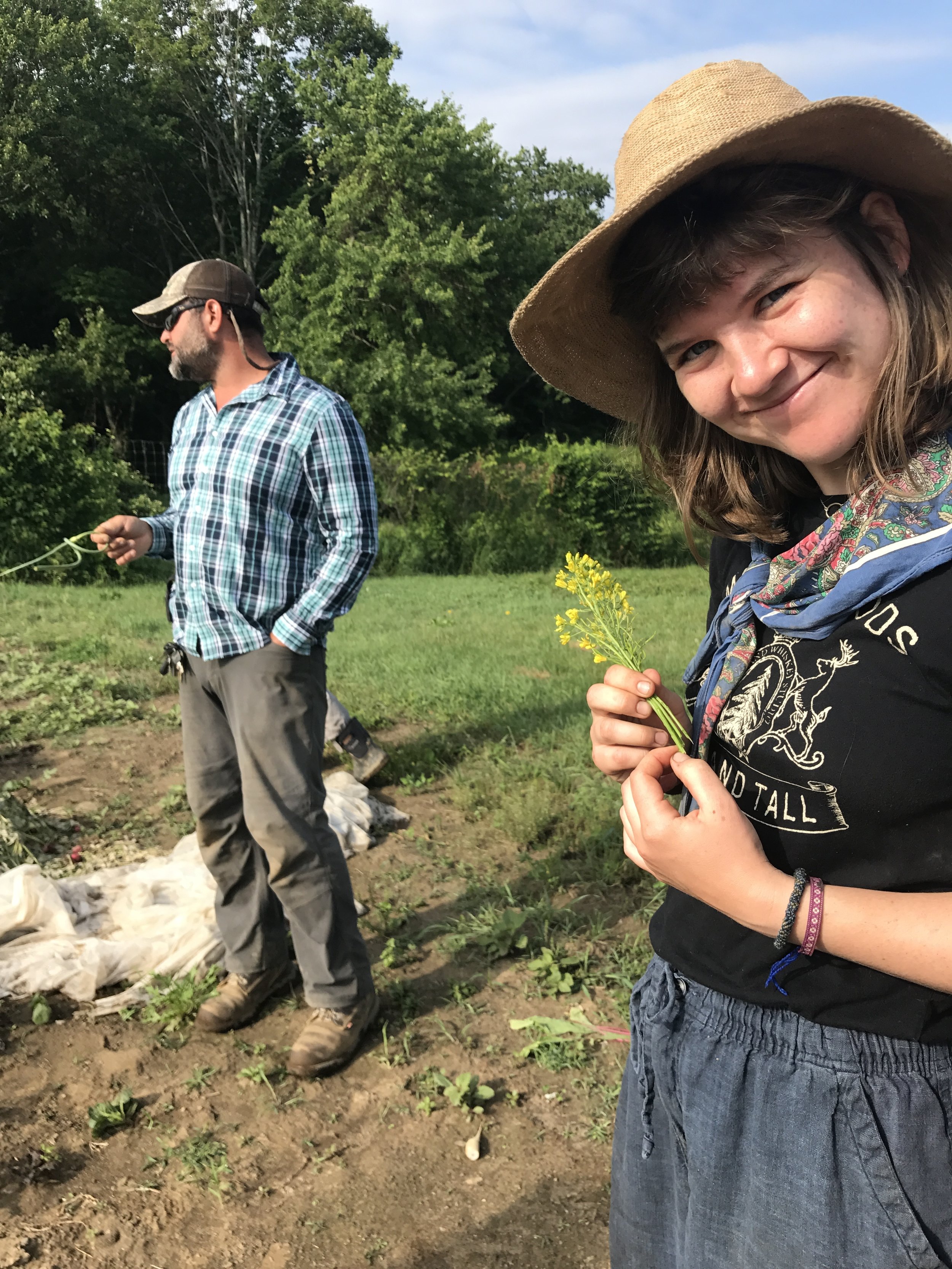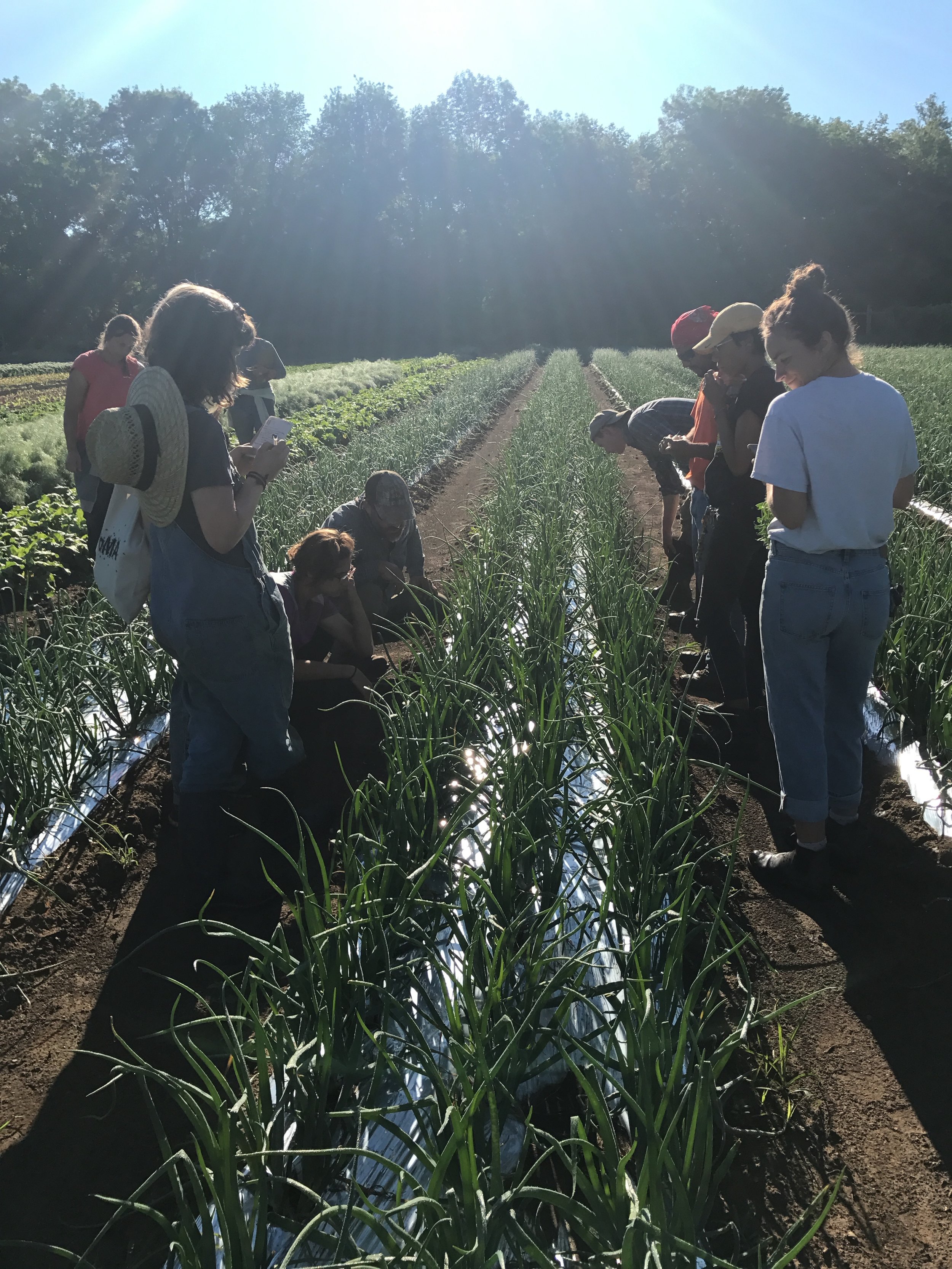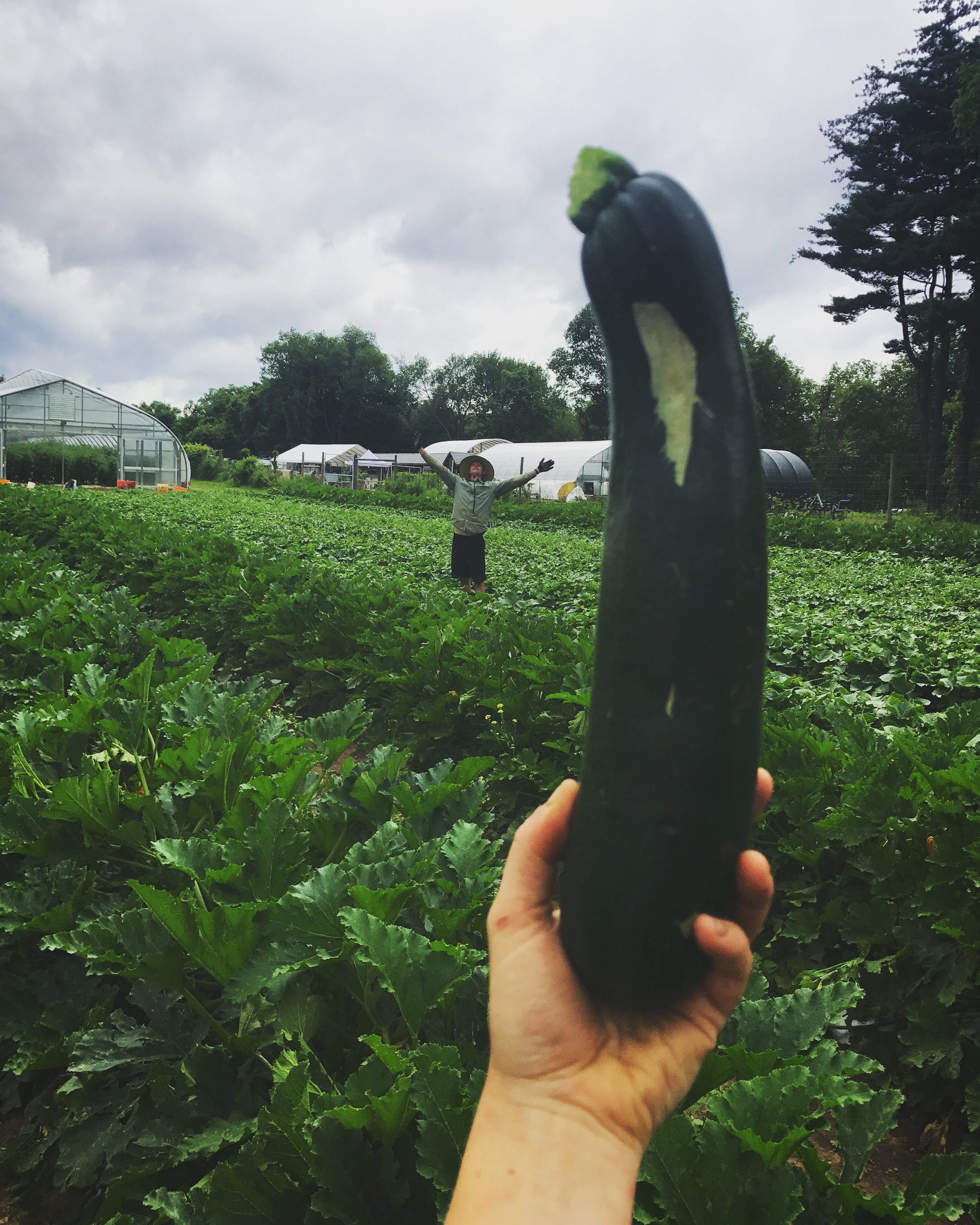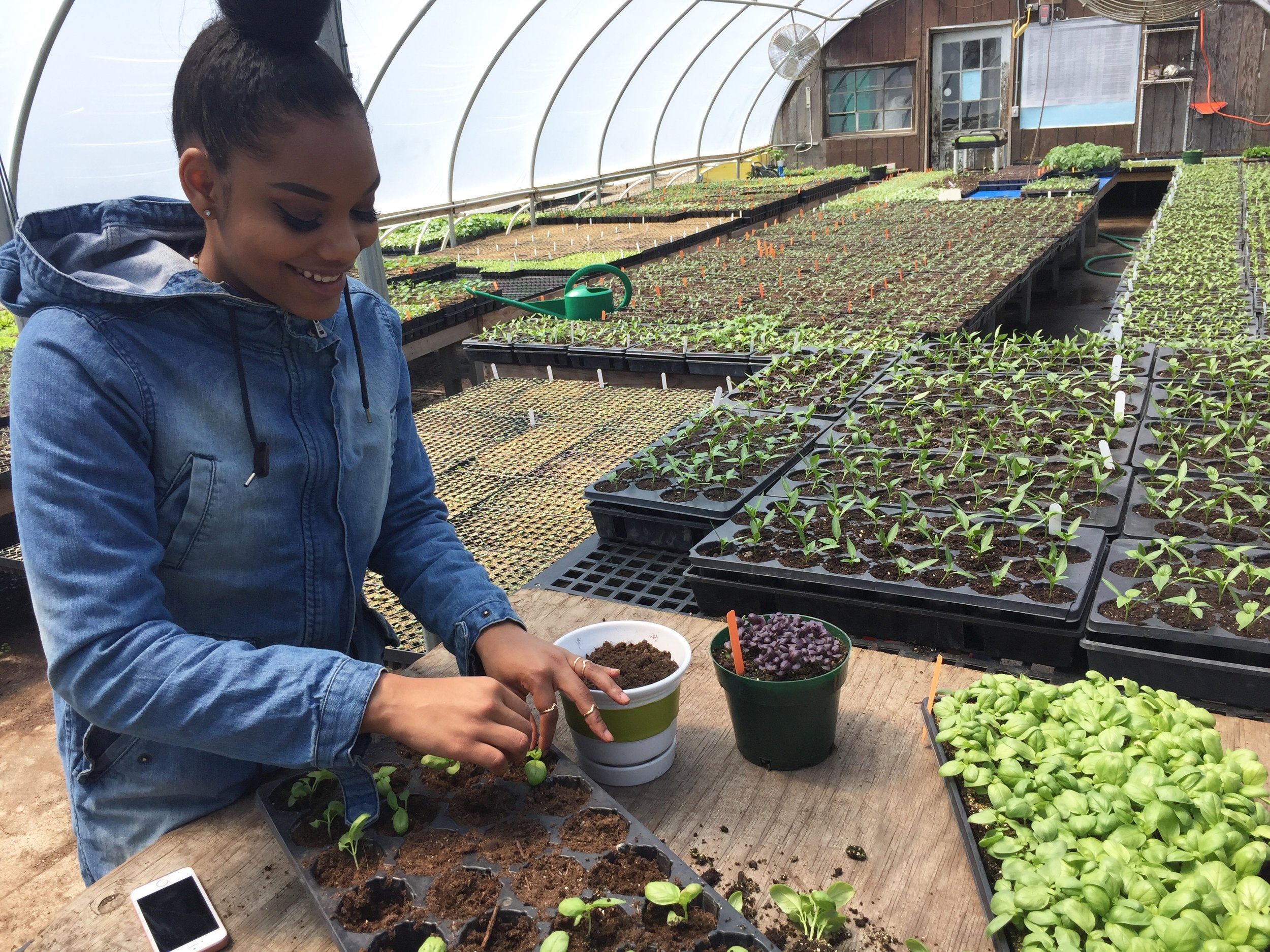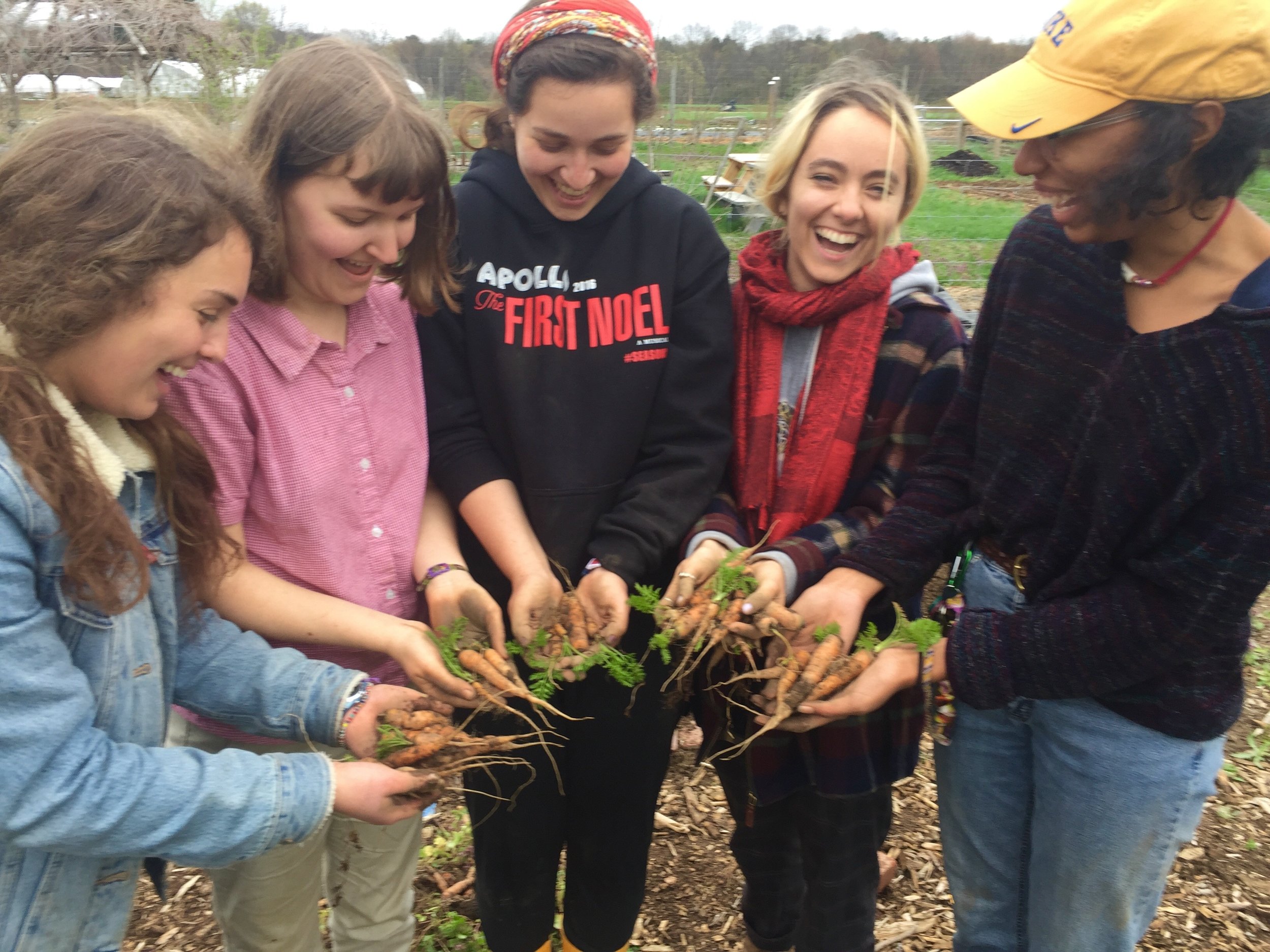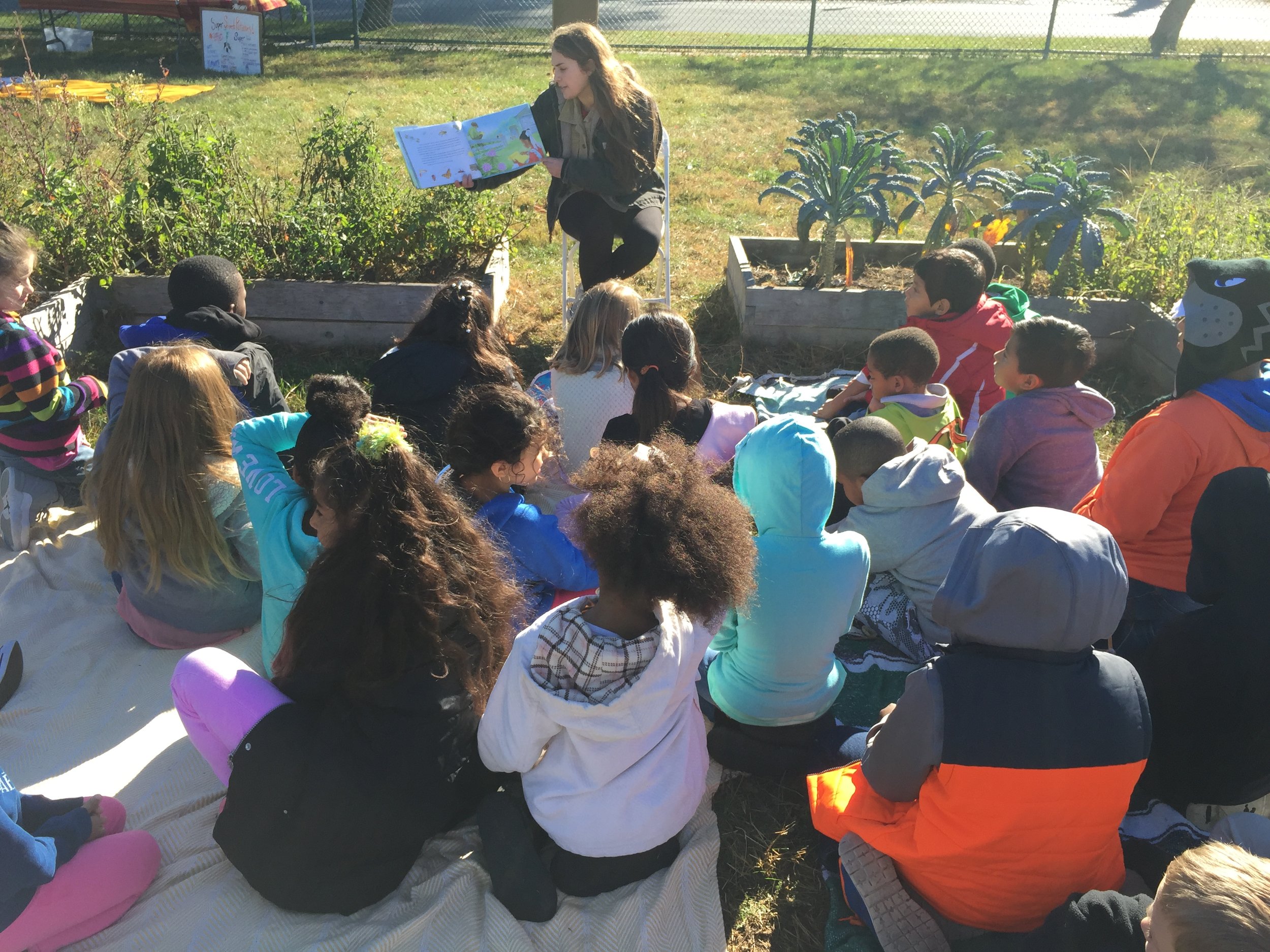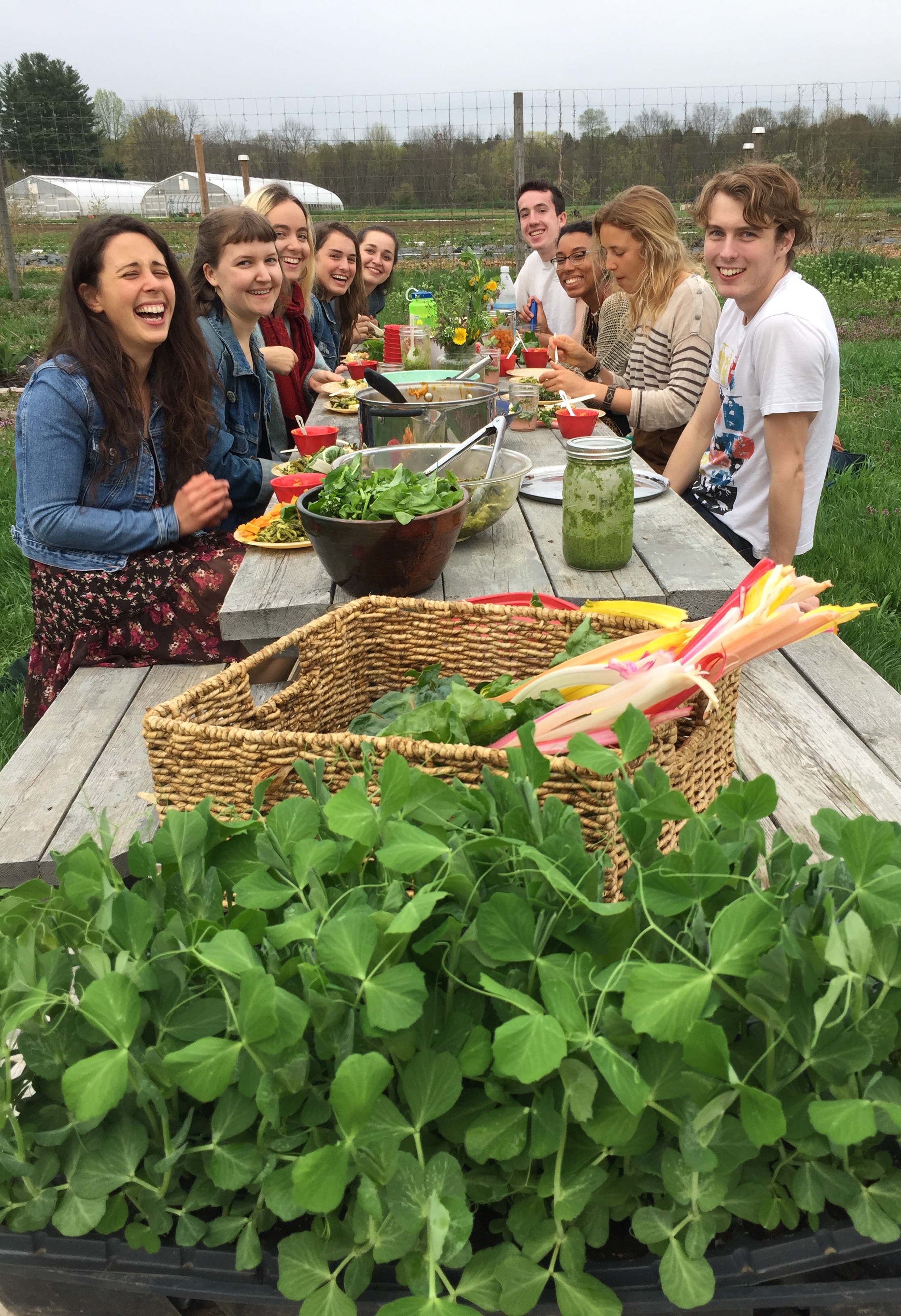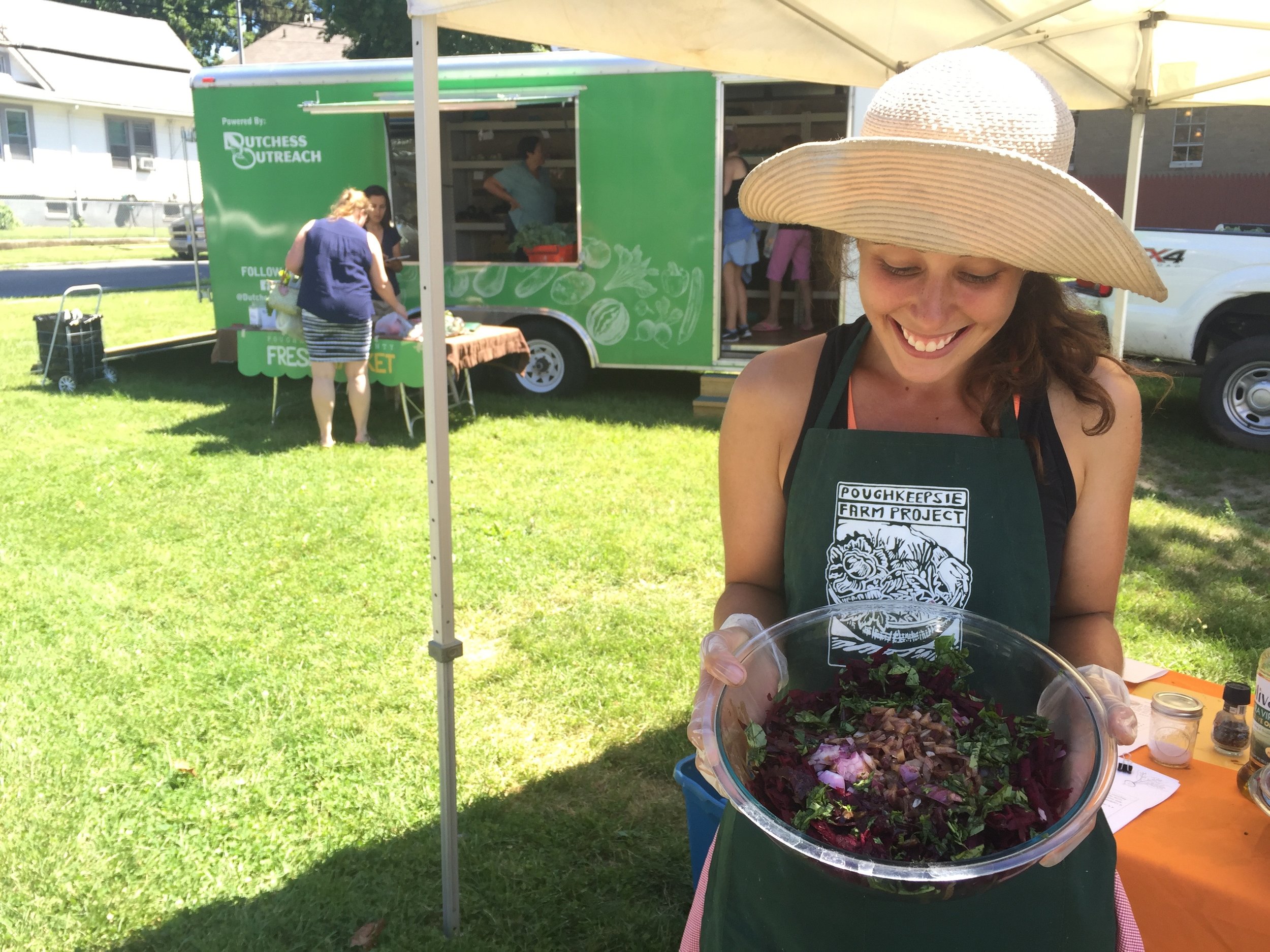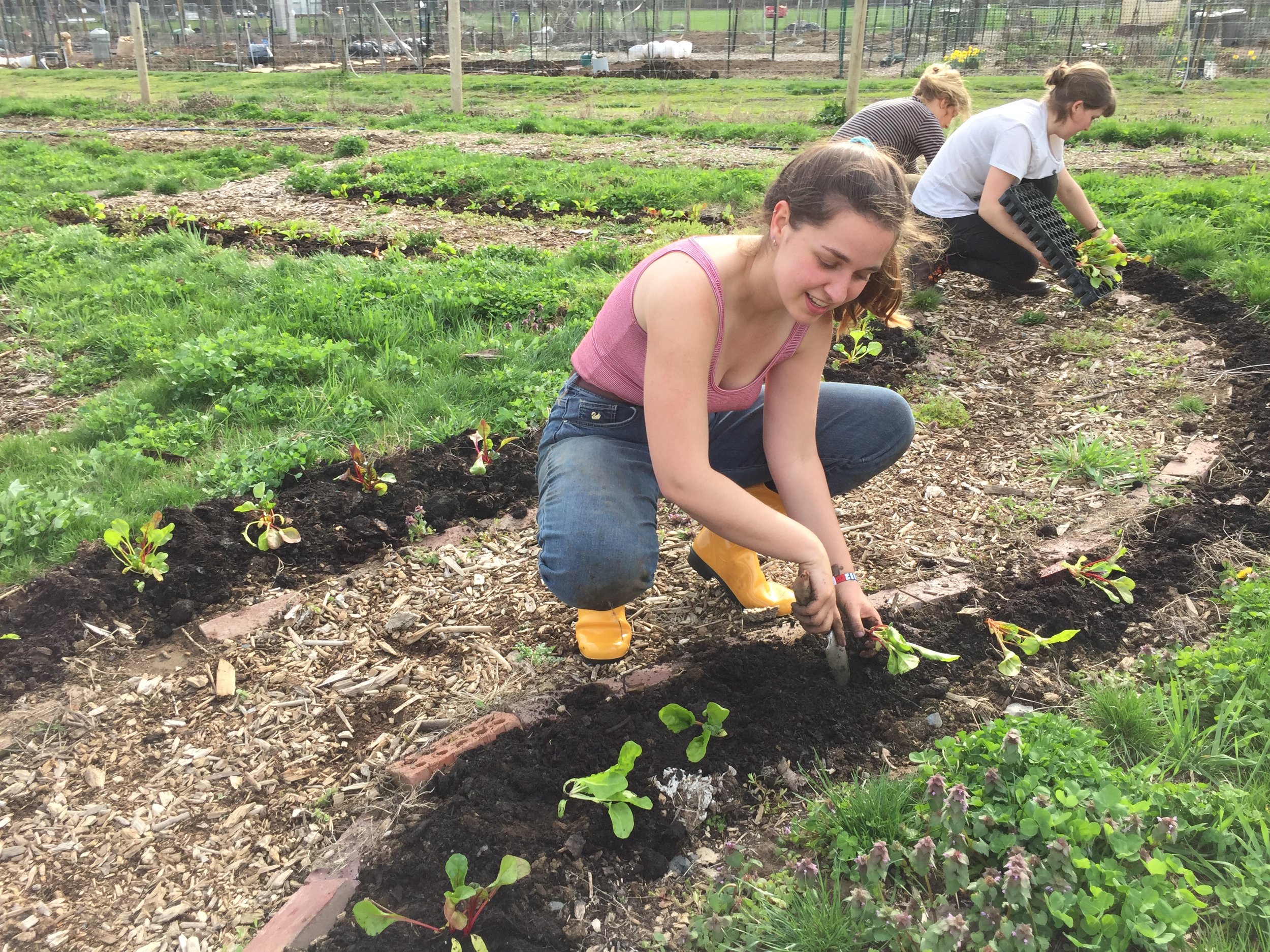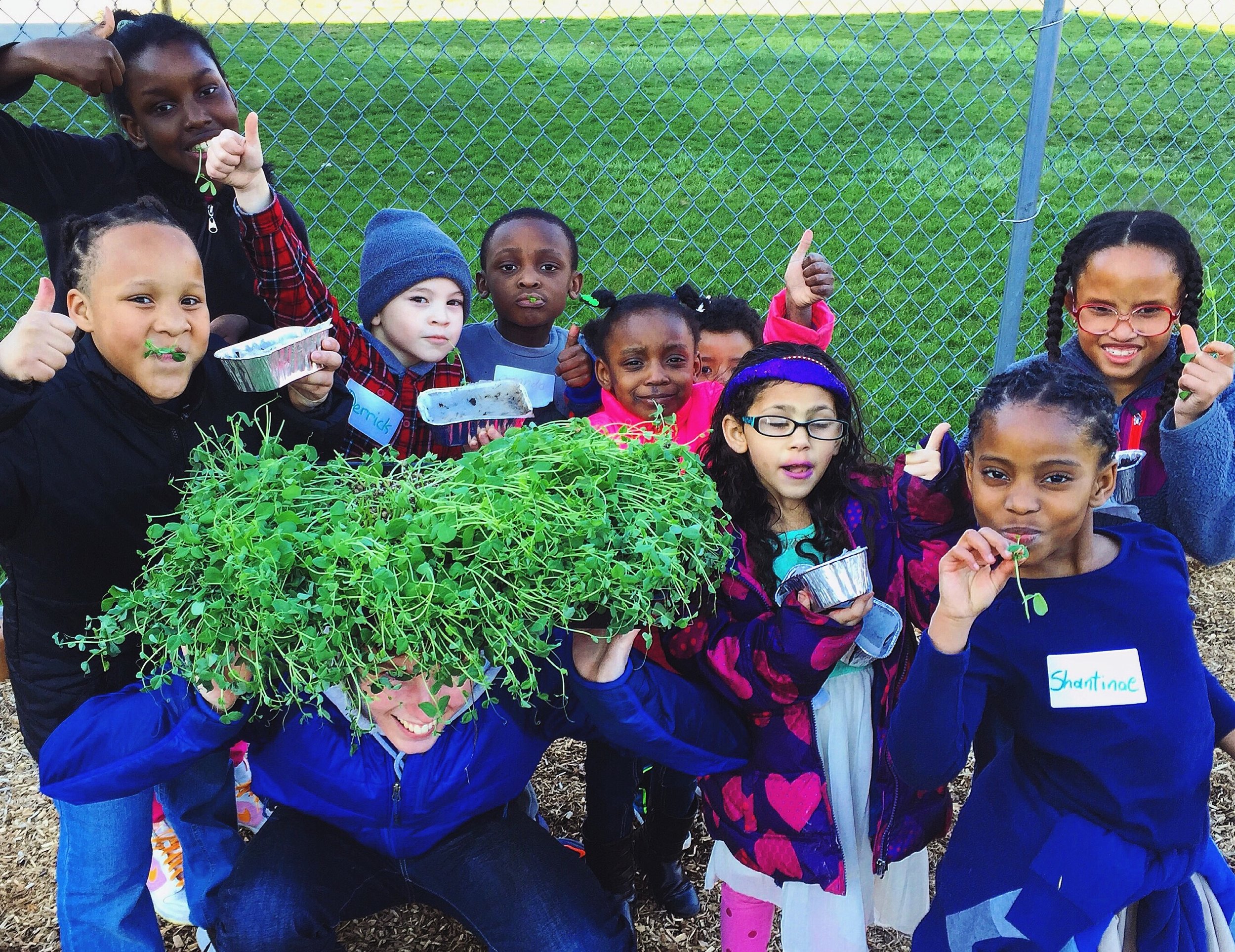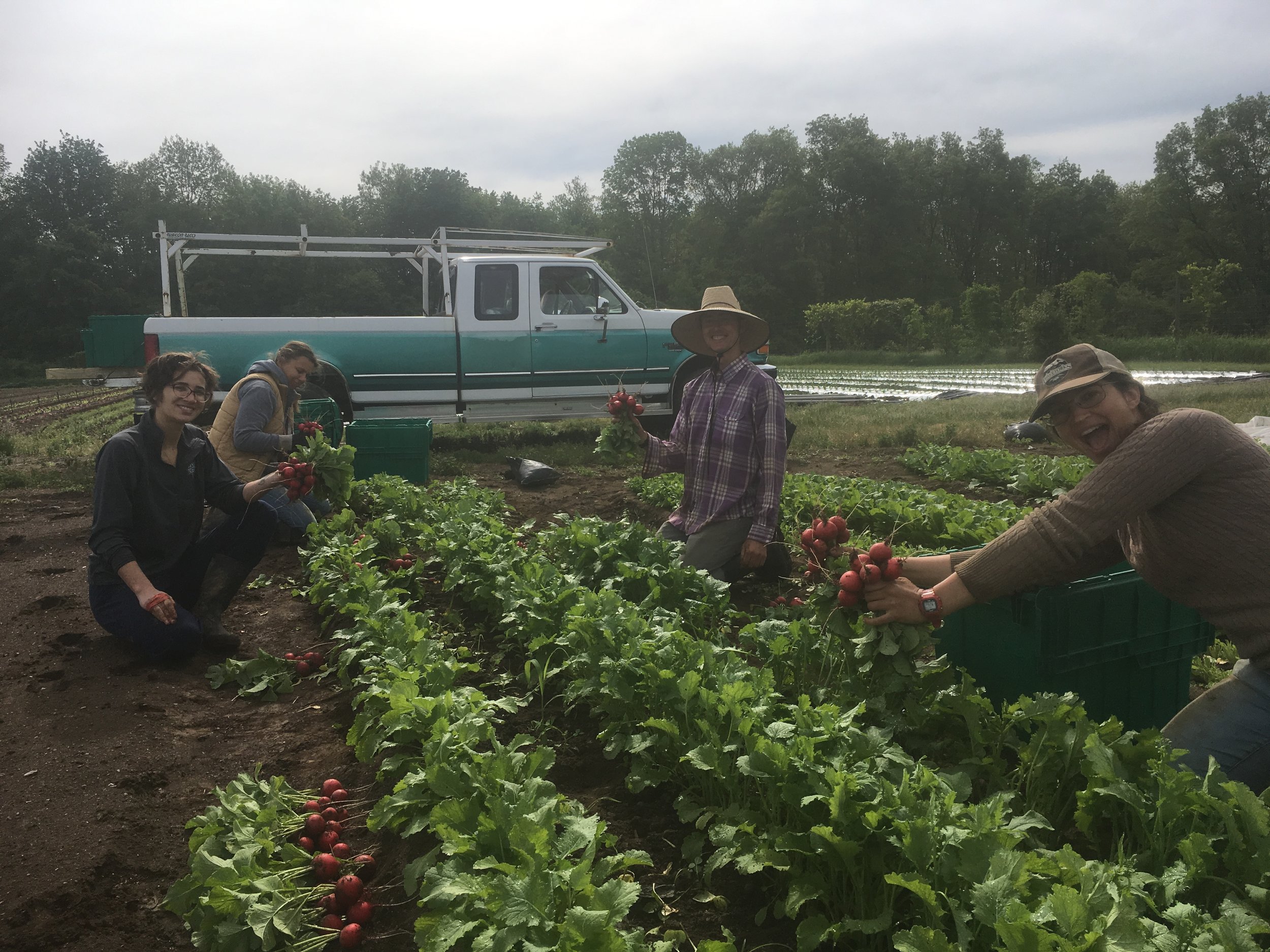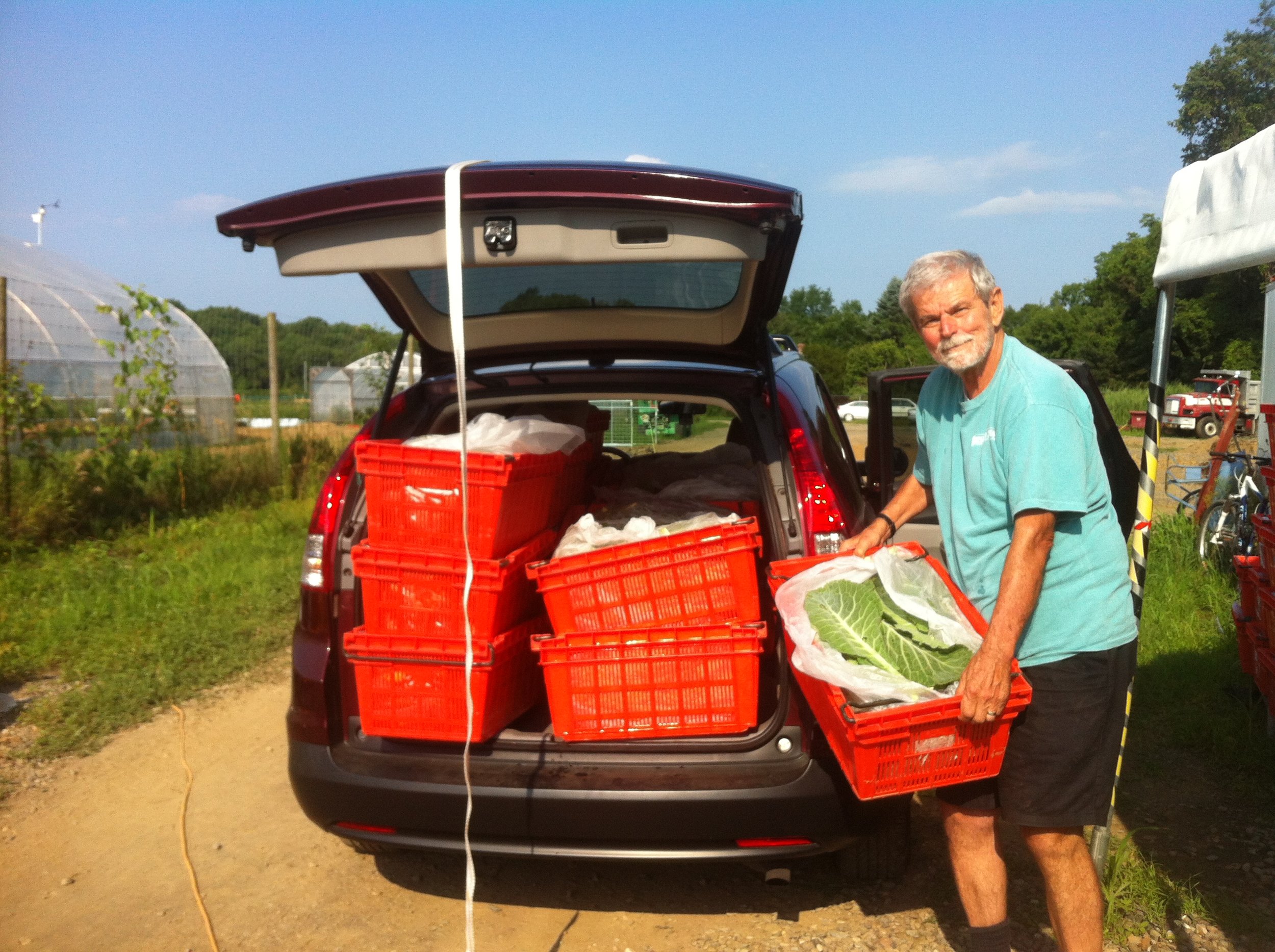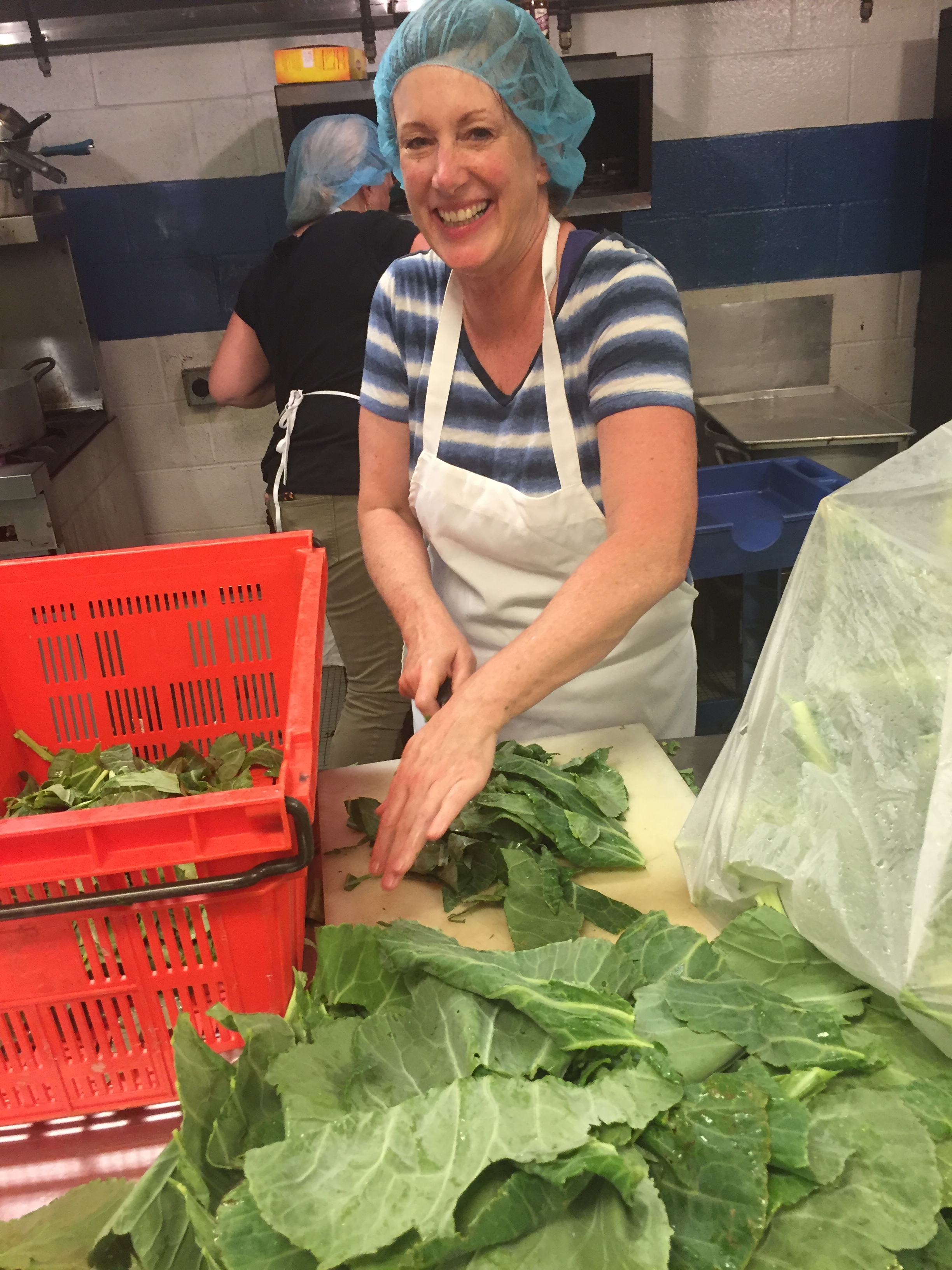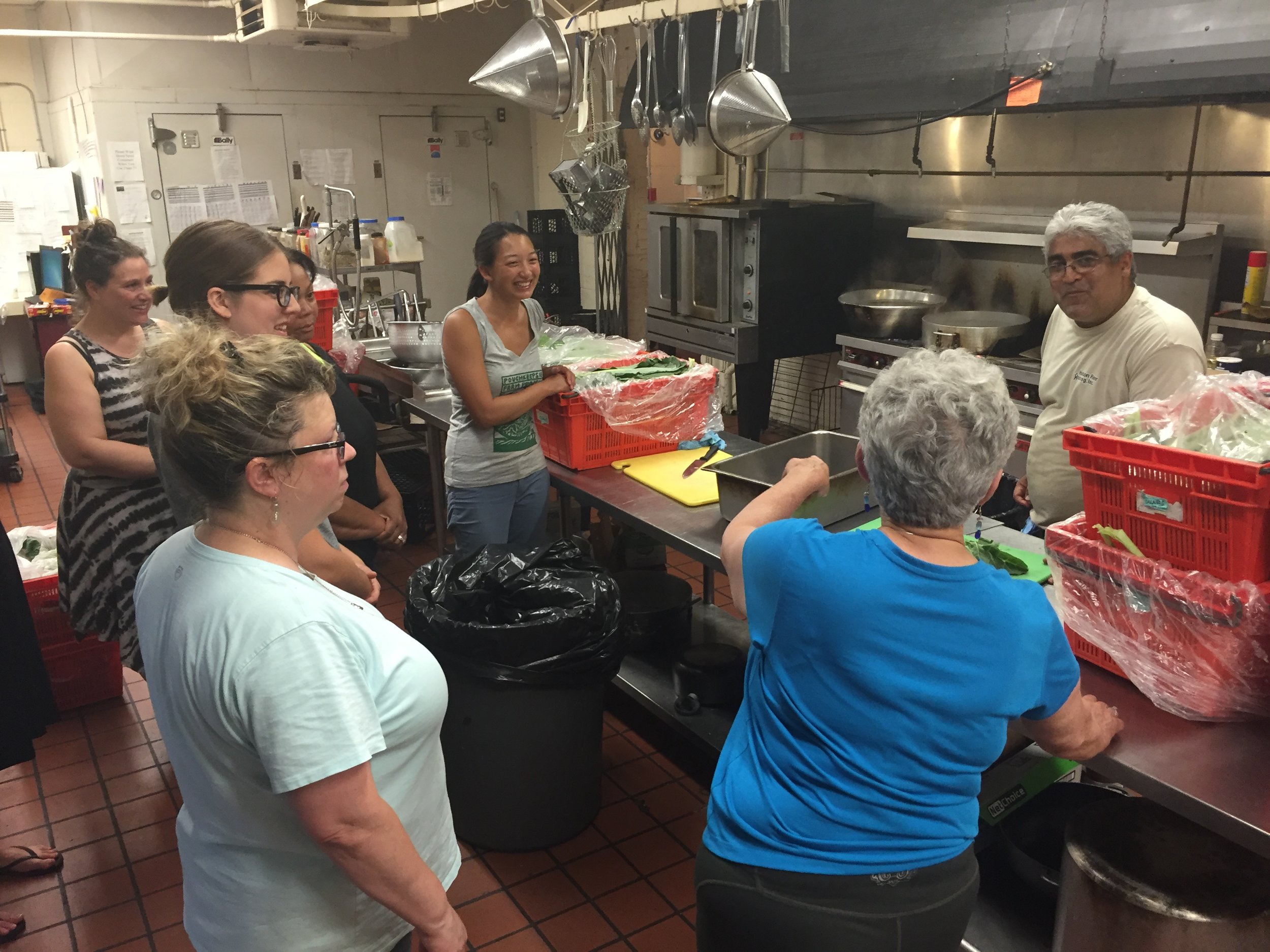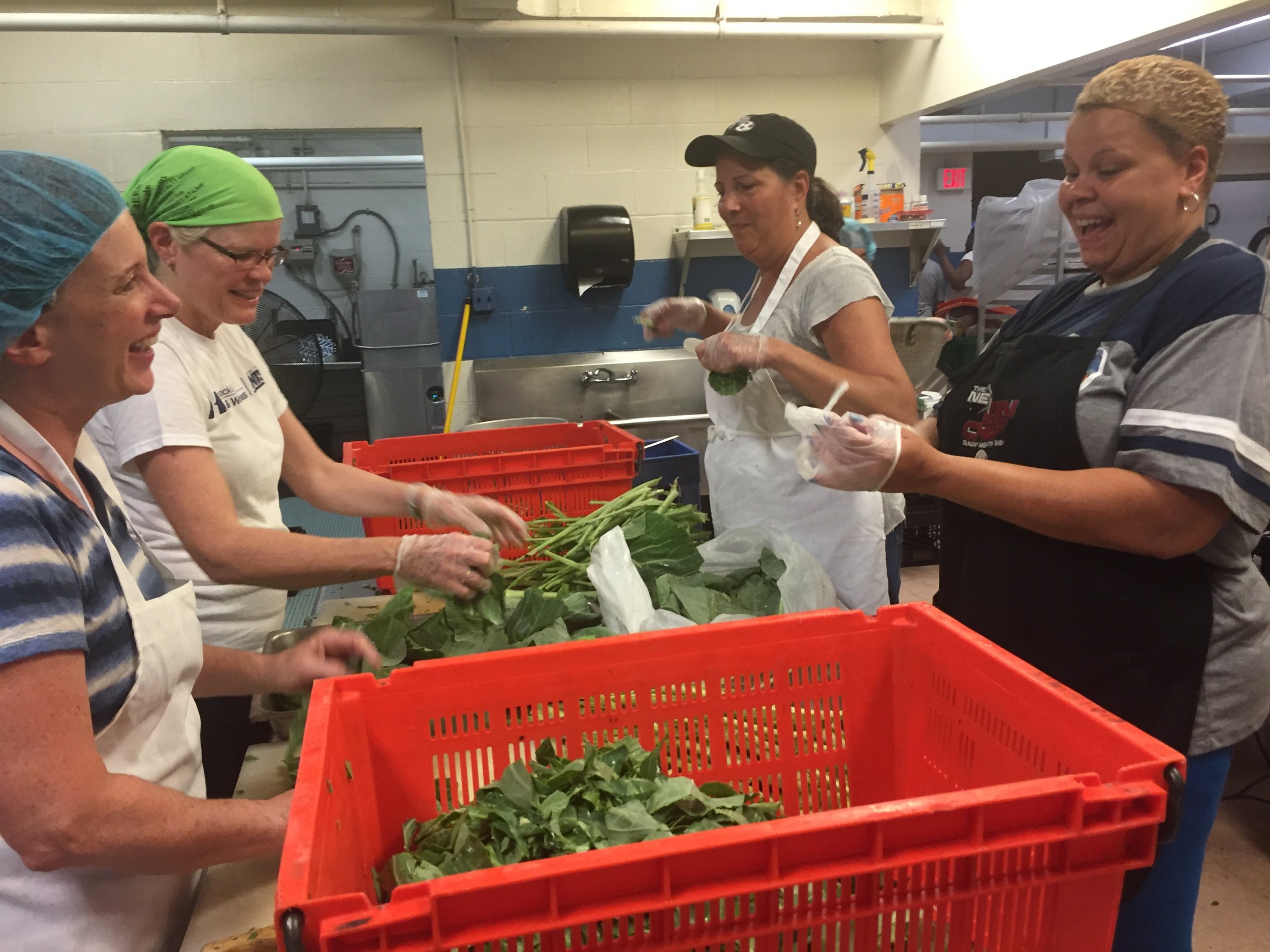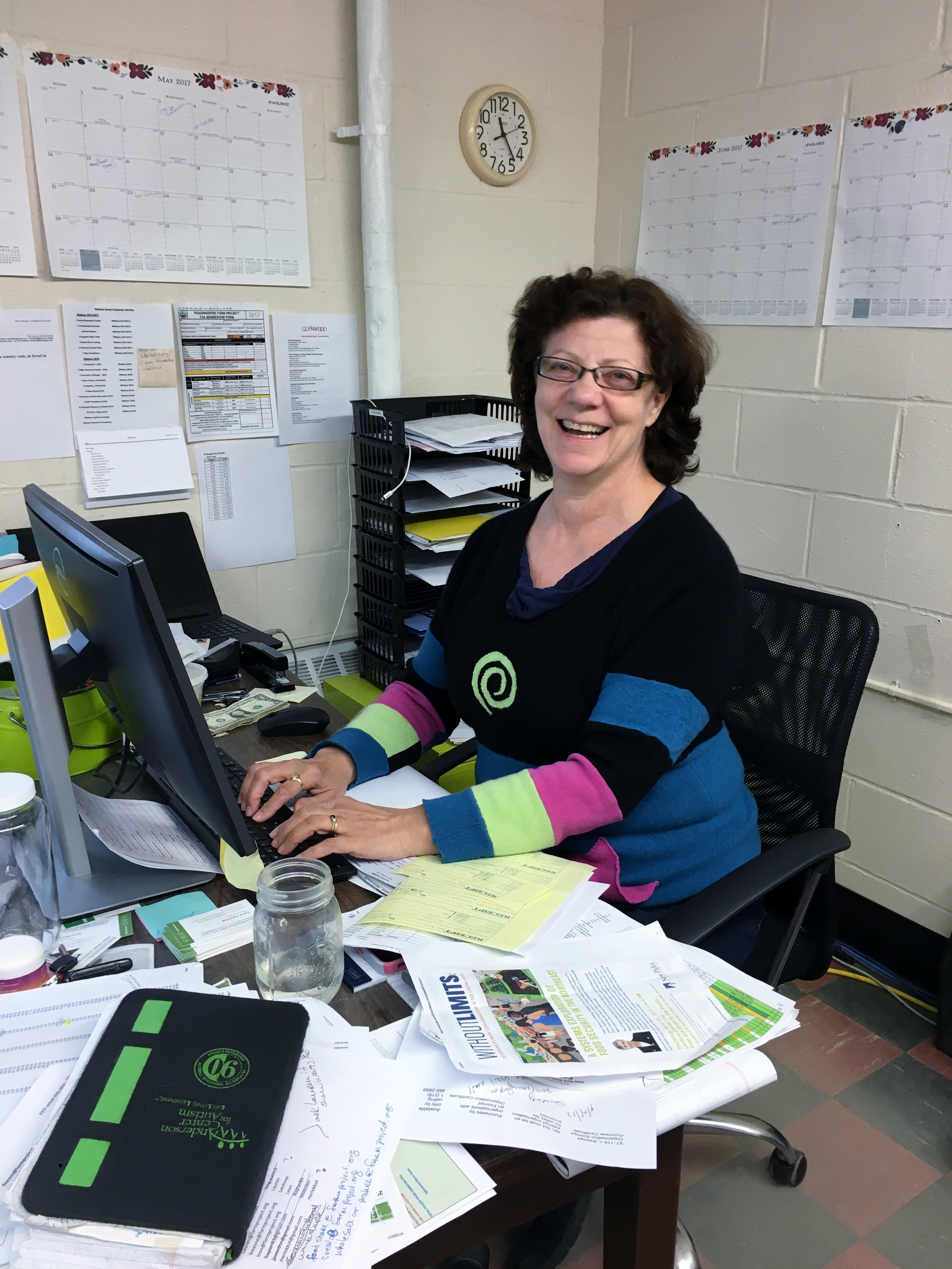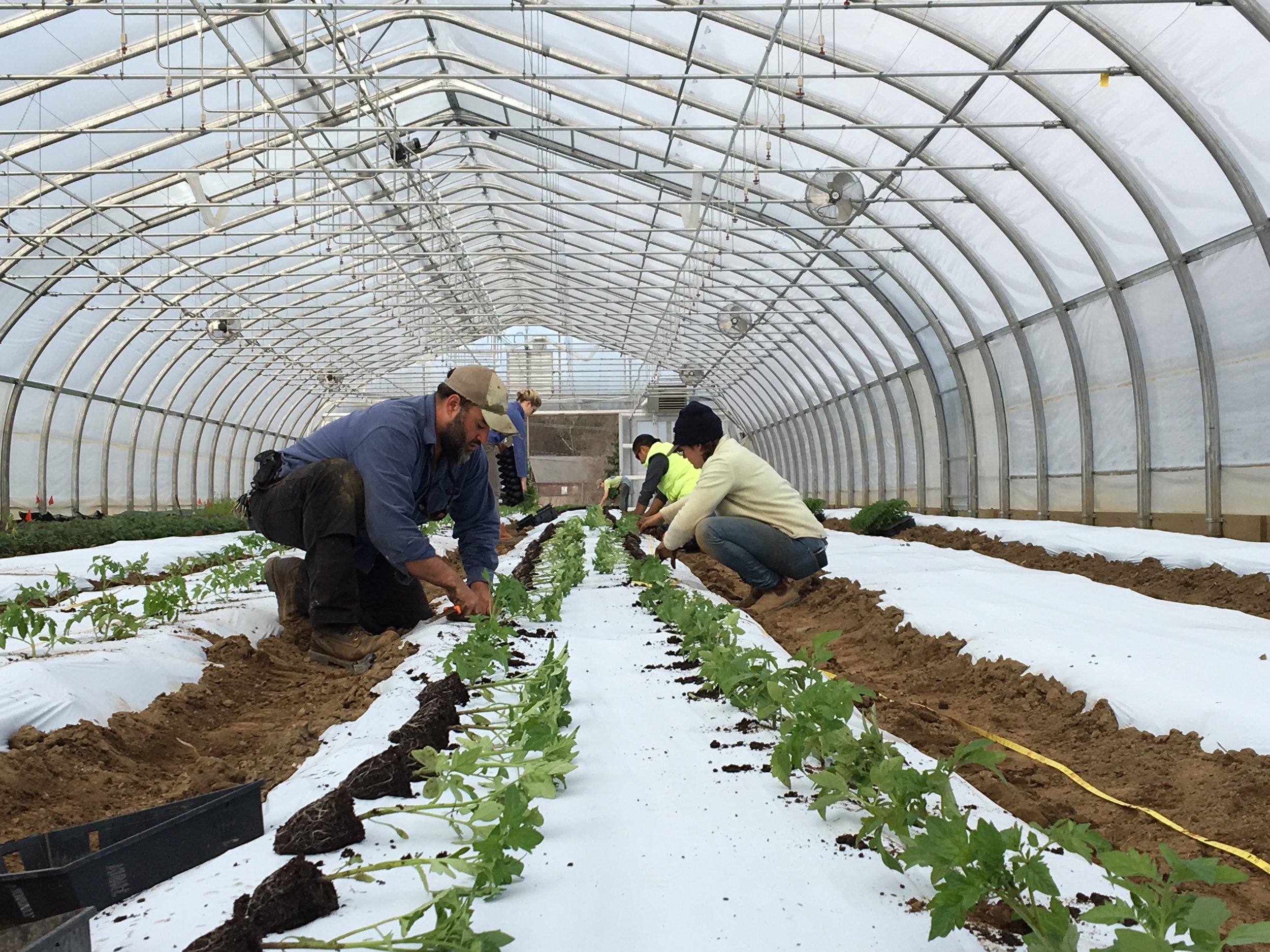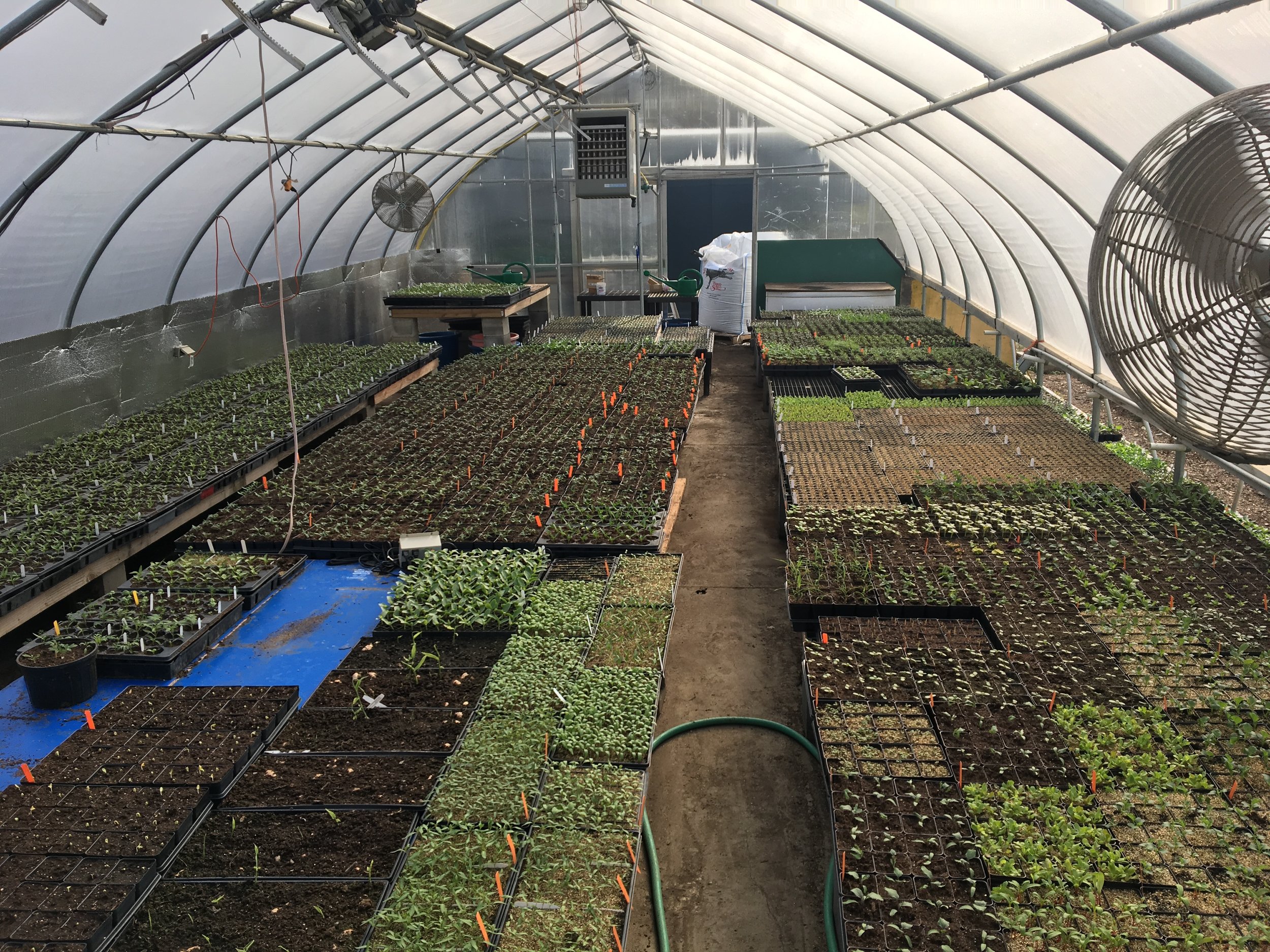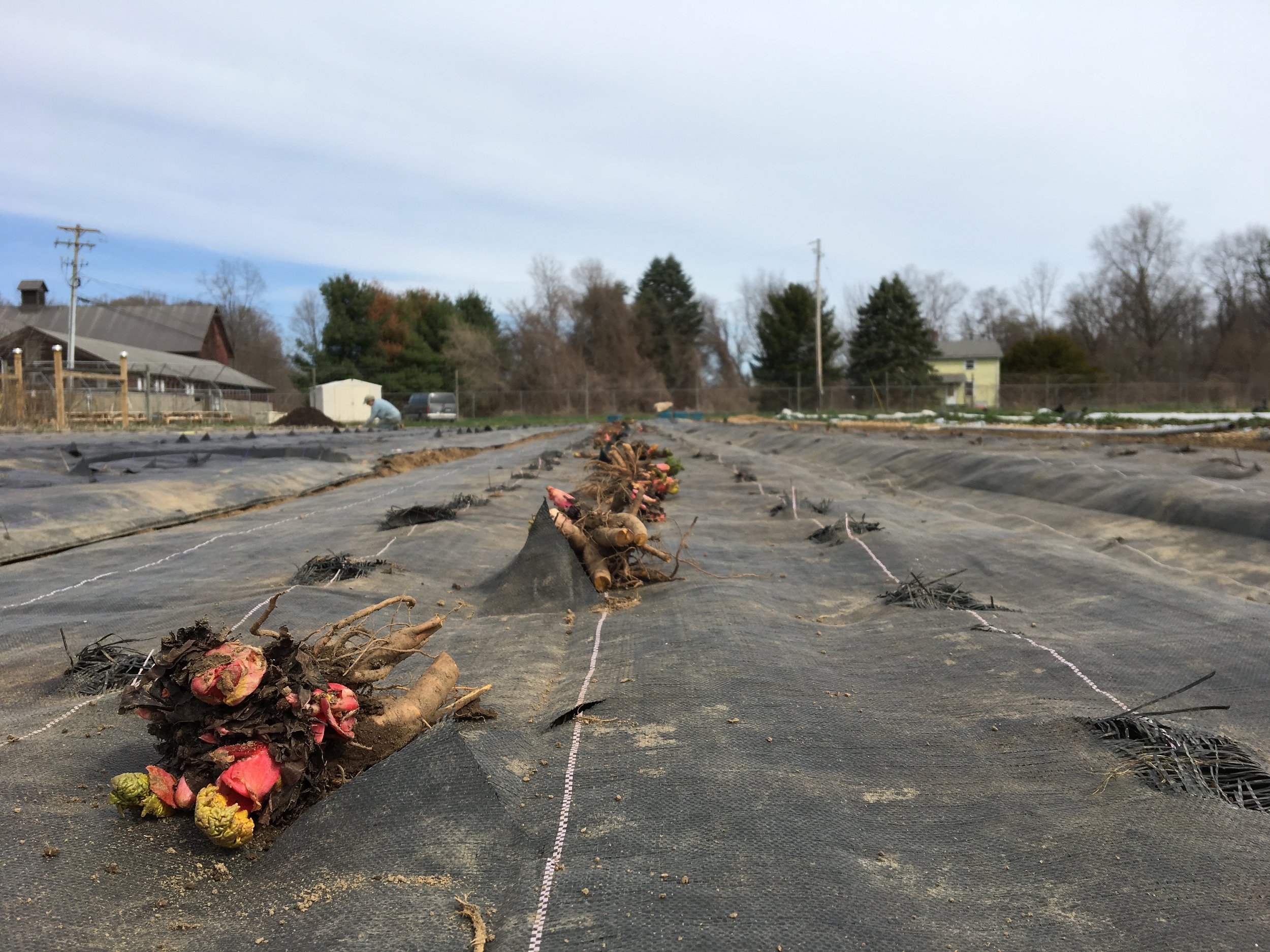by Dan Salisbury, Ed Intern
The majestic Hudson Valley sprawls roughly 7000 miles throughout New York; drive through any of the towns or cities from Albany to Yorktown and you’re bound to cross paths with one of the many bountiful farms, orchards, or vineyards sprawled throughout the state. Here in the Hudson Valley, we’ve been quite fortunate to receive access to incredible produce and meats. While this is partly due to increased consumer interest (you!) in sourcing locally and having a greater connection with local farmers, a large reason why we have such quality product is due to the hard work and pride that these farmers put into their craft. For smaller farmers, the work and labor can often be extremely difficult and the days quite long, but the finished result is often extraordinary.
Enter Pat Knapp and Allison Toepp of Back Paddock Farm. Now located in Ghent, NY, they have been raising cows since April of last year – more specifically, a herd of 100% grass-fed Red Devons. These cows have a storied history; the first Devons to come to America date all the way back to the 17th century. These purebred and docile bovines have thick skin, are efficient eaters, and their coat color can range from a deep ruby color to light red. In short, they are excellent cattle; a quality animal - raised responsibly and with care – ultimately creates a better product from the farm to your fork.
A short while ago, I had the chance to speak with Pat, who graciously explained a little about their operation.
PFP - How did you get started with the farm? Can you tell me a little about the Hudson Valley Farm Business Incubator?
Pat - I was working with Allie at Sprout Creek Farm in Poughkeepsie. We worked well together, and realized we wanted to start a business. We drew up a plan and applied [to the Hudson Valley Business Incubator] and were accepted. They provided us with just the space; we shared some land, equipment, and resources with a couple of other farms.
We were able to get our feet wet. It allowed us to get people to know what we were doing in a way where this reputable organization was backing us and supporting us. We did some fundraising with some close friends and family who wanted to invest in our future, we bought a herd, and then we just started doing it!
You have grass-fed Red Devons at your farm along with log-grown mushrooms – and you want to mimic nature’s perennial process. Can you explain how you aim to do this?
We implement a management-intensive rotational grazing system. Cattle, and livestock in general, get a bad rap and a lot of blame for a lot of environmental problems, perhaps rightfully so. More often than not, it’s not the animals intrinsically that are responsible for environmental destruction, but more the management. [Famed conservationist] Allen Savory has really promoted this style of regenerative agriculture where cattle can serve this extremely unique purpose of creating a positive impact that we would [otherwise] not be able to do without cattle or another large mobile herbivore. We rotationally graze to benefit the land in the same way bison and wild herbivores would, and we’re always focused on not just creating a diverse ecosystem (and a robust one), but we’re really focused on building soil organic matter; this is the only way that we can be taking carbon out of the air and put it back into the soil. It’s our own little form of environmental activism.
As we develop our land base, one thing that we want to be doing is responsibly tending to the forested areas of the farm. Again, we want to create a real carbon sink in the forest, where we’re not letting the plants and trees fall and decay – we want to be intensively managing our woodlot so that they can be a productive part of the farm ecosystem as well. Eventually, we’d like to be thinning out some of these forests and creating a silvo-pasture – essentially a man-made savannah where the entire area will be in shade. [BPF] will be thinning out trees and putting down grass seed; by turning that into a twice-productive perennial system, the animals will be able to graze underneath, keeping the forage plants vegetative. The hardwood trees that we’re tending to will be harvested for shitake mushrooms production, and then we hope to turn some of the hayfields into fruit and nut production.
What are some of the challenges that you face?
Most cattle out there really can’t finish well on [a 100% grass diet]. The industry has kind of moved toward a system based on corn and grain (and fuel), and we’ve got a long road backwards, almost, to be able to get animals back to a point where we can consistently create tender, high-quality meats on grass alone. We’re part of a breed improvement program, [with mentors and colleagues Mike Scannell and Joan Harris of Harrier Field farm , among others] where we’re really trying to build up the breed forward with an eye towards a quality end product. As we’re working with butchers and chefs, they can give us a higher level of feedback, which is important.
We measure our cattle; there’s a system of linear measurement and ratios that cattlemen before us found tends to correlate to quality and tenderness, as well as creating a more efficient animal that can produce more pounds of high quality meat per acre of grass. [When BPF first began] I was coming with the idea to [raise the herd] from a strict Allen Savory perspective. Mike Scannell challenged that by saying it wasn’t enough, and that it was only half of it. The other half of [raising the cattle] is the breed improvement side of things, where if you’re not improving cattle, you’re degrading – in the same way that if you’re not improving soil quality and the health of an ecosystem it can degrade as well. We’re trying to make the most of this land, and [we] have to try and maximize the amount of quality meat that we’re able to produce per acre. Part of that is improving your fields, but part of that is improving your cattle. The combination of [the ideas and methods of] Allen Savory plus my friend Mike Scannell really just kind of took us places.
We’re trying to do things in the most straight-forward way we know how. It’s a very kind of raw and pure way to do what we’re doing; we aren’t working with huge machines and government-subsidized] grains. It’s unique in the way that we’re looking to nature rather than mechanization for inspiration in efficiency. [BPF meat] is not just something that’s easy to eat, but is something that people can morally get behind to promote their ideal of animal welfare and create a positive environmental impact through their eating choices. We really make an effort to do things that cater to all kinds of ideals.
***PFP features Back Paddock Farms’ wonderful retail cuts at every CSA pickup offered at the farm. You don’t need to be a member of the CSA in order to buy, and there’s a wide variety of cuts to choose from!










